纽约时报:美国陆军为与中国作战练兵
《纽约时报》今天(2024年10月29日)发表题为“新车、涂脸和1200英尺的坠落:美国陆军准备与中国作战“(New Vehicles, Face Paint and a 1,200-Foot Fall: The U.S. Army Prepares for War With China)的文章。此文引起美国中美关系专家的极大关注和读者强烈的兴趣。截至美国东部时间晚9点半,已经有550多人在报道之后留言,绝大多数留言对美国在积极准备与中国打仗感到十分震惊和反感。
以下是对该文部分段落的翻译。文章的英文全文附在翻译段落之后。
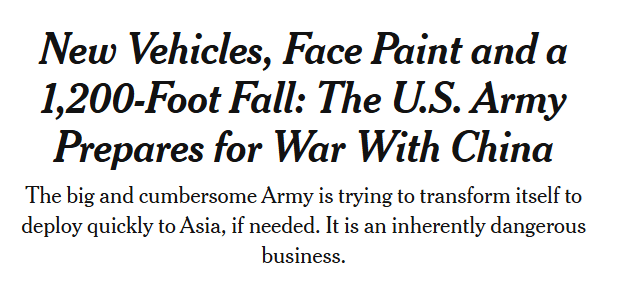
一
五角大楼称之为大国之战(Great Power War),而这场战争会较之美国以往的战争危险无数倍。它不仅会使全球两支最大的武装部队进入直接冲突—两国都拥有核武器—还有可能把包括俄罗斯和朝鲜在内的其他拥有核武器的国家卷入冲突。美国在这场战争中的死亡人数可能会超过之前美国参与的最惨烈的战争。
这场战争将在陆地、海洋、天空和太空爆发。因此,(美国)陆军正在为此练兵。
二
海军陆战队不用这么费劲,他们本来就是轻装上阵。海军也不用,因为他们其实就住在太平洋。这两个兵种在二战期间曾在太平洋地区苦战,在那里继续作战一直就在他们的基因里。
然而,现在,因为与中国开战的机会增加,庞大而笨拙的陆军在阿富汗和中东作战二十多年之后也要改变自己。与塔利班和其他散兵游勇不同,中国有在空中有可以发现他们的行动的人造卫星。陆军必须学会在雷达之下飞行。
三
为了检测陆军在太平洋岛链快速部署和作战的能力,陆军第25师的官兵与他们来自日本、澳大利亚、印尼和其他盟国部队的战友一起,先空降到丛林密布的山谷,然后再负重爬上高地。
四
前总统特朗普和副总统哈里斯对如何应对俄乌战争有截然不同的看法,对怎样化解中东战事也有不同意见。
但无论谁在11月当选美国总统,美国都会继续为与中国发生冲突而备战。
五
虽然台湾有自己的国防部署,但军事专家说,没有美国的帮助,台湾很难招架中国的入侵。美国是否介入台海战事是美国新任总统的决定,但美国的决策人担心,如果美国要保持自己的霸主地位,就不能对台湾见死不救。
文章随后引用美国战略与国际研究中心(CSIS)的高级副总裁Seth Jones的话说,美国的无动于衷会像当年罗马帝国崩溃一样引发区域的动荡不安,包括日本和韩国在内的美国太平洋盟友都会与中国就安全问题单独达成协议,并为防止中国的威胁自行研发核武器。
六
文章的第二部分讲在台岛登陆有多难,二战期间麦克阿瑟将军就否决了登陆台岛的计划,对中国军队来言,今日登岛也会困难重重。
五角大楼的官员告诉记者,中国的军事计划包括征用和改装民船,并建造浮动码头。五角大楼不愿意透露他们在如何帮助台湾加强防御,但向中国军方表明两栖作战的困难重重是遏制中国的部署之一。
七
陆军官员还对记者说,他们希望与太平洋盟国的联合军事演习可以向中国军方显示美国阻遏中国部队登陆的武器装备和作战能力。
五角大楼的官员说,目前在陆军45万官兵中已有超过四分之一被部署到太平洋战区,但他们对该战区的定义很宽,它不但包括驻扎在日本(54400人)、韩国(25000人)和菲律宾的部队,也包括那些目前在阿拉斯加、夏威夷、华盛顿、俄勒冈和加利福尼亚州的部队。在华盛顿塔科马的路易斯-麦克乔德联合基地(Joint Base Lewis-McChord)距台湾6千英里。
八
文章接着说,美国陆军工兵的一个潜水分队的潜水员今年夏天与菲律宾部队的潜水员一道清理菲律宾北部巴丹岛一个码头的水下杂物。巴丹岛距离台湾仅120英里。如果战争爆发,巴士海峡是运兵的重要通道,这个码头的战略位置极为重要。(《华尔街日报》最近发表文章说,美国空军正在清理和修复自己位于太平洋岛屿二战时期的军用机场,未来一旦与中国开战,这些机场极为重要。)
九
10月中旬结束的在夏威夷的演习旨在复制与中国作战的情景,官兵在阿富汗和伊拉克作战的沙漠隐蔽迷彩服换成了热带丛林迷彩服,士兵的脸上也全是隐蔽涂料。
十
文章最后一部分描述了这次演习的一个事故。
864名官兵从阿拉斯加起飞,在檀香山附近空降,一名列兵从C17运输机跳出时降落伞没有打开,他也未能打开自己的备份伞。坠落后他还能讲话,但25师的人并没有跟记者说他的具体伤势。记者担心他以后可能不能再走路了。
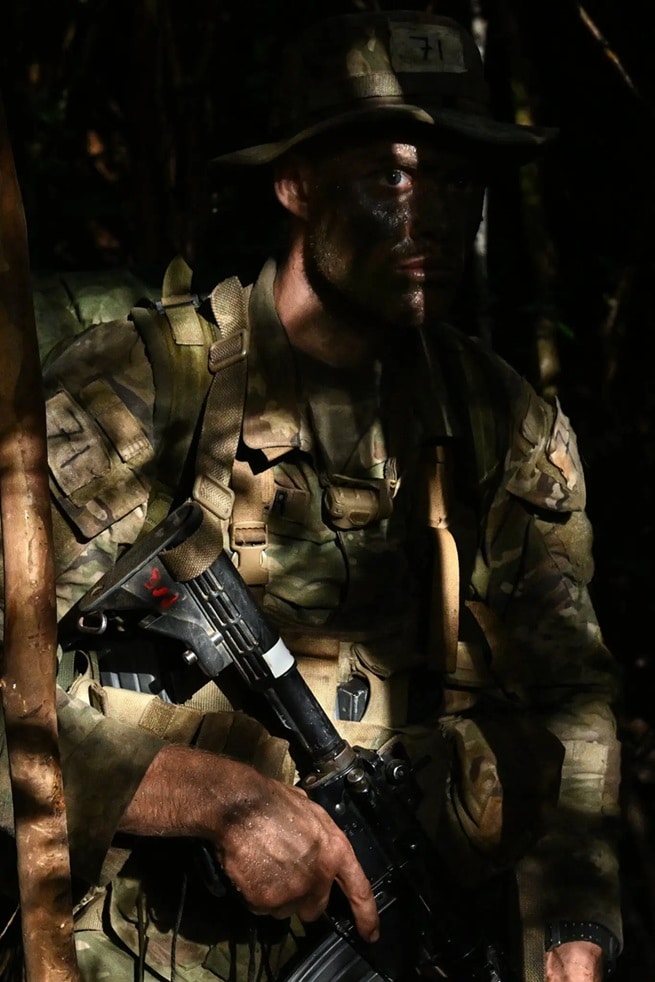
New Vehicles, Face Paint and a 1,200-Foot Fall: The U.S. Army Prepares for War With China
The big and cumbersome Army is trying to transform itself to deploy quickly to Asia, if needed. It is an inherently dangerous business.
By Helene Cooper
Photographs and Video by Kenny Holston
Reporting from Mauna Loa, HawaiiEarly one morning this month, 864 Army paratroopers bundled into C-17 transport planes at a base in Alaska and took off for a Great Power War exercise between three volcanic mountains on Hawaii’s Big Island.
Only 492 made it. Some of the C-17s had trouble with their doors, while others were forced to land early. A few of the parachutists who did make it sprained ankles or suffered head trauma. And one — a 19-year-old private — began to fall quickly when his chute did not open.
Across the field, shouts of “pull your reserve” could be heard before the young private hit the ground and medics ran to treat him. The horrifying scene and its aftermath encapsulate every jumper’s worst nightmare.
But Pvt. Second Class Erik Partida’s 1,200-foot fall was also a stark reality check as the U.S. Army transforms itself, and its hundreds of thousands of young men and women, for yet another war, this one a potential conflict with China.
The Pentagon calls it a Great Power War, and it would be exponentially more dangerous. It would put the world’s two strongest militaries — both of them nuclear superpowers — in direct conflict, possibly drawing in other nuclear adversaries, including North Korea and Russia. U.S. troops would be killed, in numbers that could possibly go beyond the toll from America’s deadliest conflicts.
Such a war would be fought on the ground, at sea, in the air and in space. So the Army is practicing for exactly that.
Forget the Marines, who can get anywhere quickly, because they travel light. Or the Navy, which practically lives in the Pacific. Those services, which featured heavily in the Pacific during World War II, have the planning for a conflict in Asia baked into their DNA.
But now, as the chances of war with China increase, the big and cumbersome Army is trying to transform itself after two decades of fighting terrorism in Afghanistan and the Middle East. Unlike the Taliban or other insurgents, China will have satellites that can see troop formations from the sky. The Army must, in essence, learn how to fly under the radar.
To stress-test the Army’s ability to deploy quickly and fight on Pacific island chains, soldiers with the 25th Infantry Division, along with Japanese, Australian, Indonesian and other partner troops, rappelled into jungle ravines and then made the humid climbs up, laden with gear.
Some 28 miles away at Pearl Harbor, Army transport ship crews ironed out various ways to discharge the military equipment and the troops they will need in the event of war in the Pacific.
And not far from the North Shore of Oahu, soldiers worked to disguise a multivehicle command and control unit, complete with big-screen computer stations, so that it was almost indistinguishable from the deep green forest.
Former President Donald J. Trump and Vice President Kamala Harris have outlined vastly different approaches to Russia’s war in Ukraine. Their approaches to turmoil in the Middle East are also expected to be at least rhetorically different.
But no matter who wins in November, the United States will continue to prepare for war with China.
Beijing has made clear that it will seek to expand its power in Asia, from militarizing uninhabited rocks in the Pacific to claiming sovereignty over international waters. And all of that starts with Taiwan, which President Xi Jinping has ordered the Chinese military to be ready to invade by 2027.
While Taiwan has its own defenses, military experts say it is difficult to see how the island would repel a Chinese invasion without U.S. help. Such a move would be a decision for whoever is president at the time, but American policymakers worry that staying out of it may not be an option if the United States wants to maintain its dominance.
“My sense is that a successful Chinese invasion of Taiwan would send massive ripples throughout the region,” said Seth Jones, a senior vice president with the Center for Strategic and International Studies. “China would likely emerge as the dominant military power in the region, not the United States, and it would trigger a range of second- and third-order effects.”
For instance, America’s Pacific allies could lose faith in U.S. deterrence and try to make security deals with China. Japan and South Korea — both treaty allies of the United States — could join the nuclear club as a way to defend themselves against China.
“Is it quite the fall of the Roman Empire?” Mr. Jones said. “I don’t know, but that’s the right kind of question to ask.”
‘Tyranny of Distance’
The U.S. Army knows how hard it would be to invade Taiwan.
During World War II, when the island was called Formosa and was occupied by Japan, the Joint Chiefs of Staff came up with Operation Causeway, an invasion plan that would give the United States a base closer to Japan from which to attack. Gen. Douglas MacArthur opposed invading Taiwan as too risky; it meant crossing a contested sea to fight on complex terrain against a well-defended army. Military planners said an amphibious assault on the island would have been far harder than the D-Day landings at Normandy.
Few Army planners think the Chinese military is ready to undertake an amphibious assault of Taiwan.
“The first thing you have to do is you have to generate an invasion force, which would be a pretty large force, to go onto an island which has a prepared defense,” Maj. Gen. Jeffrey A. VanAntwerp, the director of operations for the Army’s Pacific Command, said in an interview. “There’s 100 miles of Taiwan Straits that you have to get across, and you’re doing that in large transport vessels that are very vulnerable during that crossing.”
China would most likely use light amphibious vessels to try to secure a beachhead in Taiwan, military planners say, but those vessels would have to plow through heavily mined waters. And while air assault forces would probably try to target infrastructure, in the end there is no viable way to seize an island as large as Taiwan, with its own defenses and 23 million people, without putting a force on the ground — troops who would have to come by sea.
“You can’t do it without pushing a large landing force across the straits on ships,” General VanAntwerp said. “There’s no other way.”
So China is working on it. Chinese military planners have repurposed civilian ferries to transport troops and equipment across the strait and are working to construct floating piers, American officials say.
The Pentagon would not go into detail about how American trainers are helping Taiwan build defenses. But making clear to the Chinese that an amphibious assault would be fraught is part of the U.S. military’s deterrence plan.
Army officials also say they hope joint exercises with Pacific partners will show Chinese military officials all the capabilities that the United States has and can bring to bear.
The officials point out that more than a quarter of the service’s 450,000 active-duty troops are already tasked to the Pacific. But they define that region liberally, to encompass troops not only in Japan, South Korea and the Philippines but also in Alaska, Hawaii, Washington, Oregon and California. Taiwan is more than 6,000 miles from Joint Base Lewis-McChord near Tacoma, Wash., a separation the Army refers to as “the tyranny of distance.”
Docked in Pearl Harbor, the U.S. Army vessel Maj. Gen. Robert Smalls will be critical to getting all the apparatuses of the Army into the Pacific theater. The 300-foot-long ship, which recently arrived from Norfolk, Va., via the Panama Canal for the exercises, can beach itself, discharging 900 tons of vehicles and cargo — and, if necessary, troops — onto islands.
Capt. Ander Thompson, the commander of the Seventh Engineer Dive Detachment out of Pearl Harbor, was part of a detachment that spent several weeks this past summer with Filipino military divers clearing debris from a strategic port in the northern Philippine island of Batan, about 120 miles south of Taiwan.
The operation, which also deepened the harbor, will give Army and Navy ships better access to the port should conflict break out. Batan is near the Bashi Channel, a potential transit point for American forces headed to the Taiwan Strait.
The American Air Force cannot establish air superiority over the entire Pacific Ocean, but it can open up corridors, what the Army calls “interior lines” for unfettered movement, between, say, the Philippines and other islands. The United States has some troops already in place — about 54,000 in Japan, 25,000 in South Korea and a far smaller number in the Philippines.
The Hawaii exercises, which ended in mid-October, were devised to replicate the conditions that troops can expect in a war with China. Gone were the desert-sand-colored fatigues that became de rigueur during the Afghanistan and Iraq wars. The troops in Hawaii wore jungle fatigues and face paint.
Troops worked on new maneuvers patched together from watching Ukraine fight Russia. They dismantled and moved large and cumbersome command and control operations in 20 to 30 minutes, and communicated with one another without using Army satellites, so that an adversary would not be able to pick up their conversations.
Learning how to advance in small teams that can attack and then dissipate into thin air was key. The Army sent to the troops 96 new rainforest-green infantry squad vehicles that can quickly move up to nine soldiers each through jungle terrain.
“It is so powerful to be able to send a company’s worth of personnel, which is about 130 people, on those vehicles, along multiple routes, and then at a point bring them together to attack the enemy, and then disappear in different directions,” said Maj. Gen. Marcus Evans, the 25th Infantry Division’s commander.
‘Pull Your Reserve’
The first of the 864 Army parachuters who took off from Alaska began appearing in the skies above the three volcanic mountains just after sunrise on Oct. 7.
From the ground, the sight could easily pass for an Army airborne commercial, as waves of jumpers shot out of the side of the C-17s and floated to earth, their chutes billowing. All of the soldiers were supposed to be equipped with two chutes, including a reserve if their primary chute did not deploy within four seconds after they jumped out of the plane.
Around 7:35 a.m., Lt. Col. Tim Alvarado, the commander of the garrison at the Pohakuloa Training Area, peered into the sun as the next C-17 approached.
“The paratroopers should be standing at this point; they would have gotten the 10-minute warning,” he said, narrating the jump for me. “The jump master is looking out, making sure there are no obstructions as the parachuters are getting ready to jump out.”
The C-17 roared overhead, and the jumpers started appearing like closed umbrellas that whooshed open in the sky as their chutes expanded. “Some of them get twisted up so they have to unwind their ropes so they don’t land awkwardly,” Colonel Alvarado continued.
Then, surveying the scene, he said, “That’s not right.”
Before us, what looked like a cigarette in the sky was falling in the midst of the canopy of ballooned parachutes. Above the jumper, Private Partida, air moved through his chute, creating a wiggly line. But the air did not inflate the chute.
“Pull your reserve,” Colonel Alvarado said quietly.
The reserve never deployed. Private Partida disappeared from view beneath a berm as he hit the ground.
Capt. Kaleigh Mullen, an Army doctor, started running. Medics stationed throughout the drop zone were doing the same.
Members of Private Partida’s unit got to him first. He was calm and conscious, but his spine was damaged. Captain Mullen arrived, panting from her seven-minute sprint. She and Maj. Mitch Marks, an Army physician assistant, propped up his neck and spine to make sure he did not suffer any additional damage.
“OK, so he was very talkative, and he was able to say that he didn’t have any pain,” Captain Mullen told me later. She took his first set of vitals at 7:45 a.m., and by 8:20 the Black Hawk medevac helicopter was in flight, on its way to the hospital.
A statement released a day later provided few details. “An 11th Airborne Division soldier was injured in a training incident in Hawaii today,” it said. The release made no mention of the unopened chute or the reserve.
Nor did it mention that doctors later fused Private Partida’s vertebrae in multiple surgeries. Whether he will be able to walk again is not known.
Instead, the statement ended with a description of the purpose of the exercises, which included preparing paratroopers for “decisive action operations in the U.S. Army Pacific area of responsibility.”



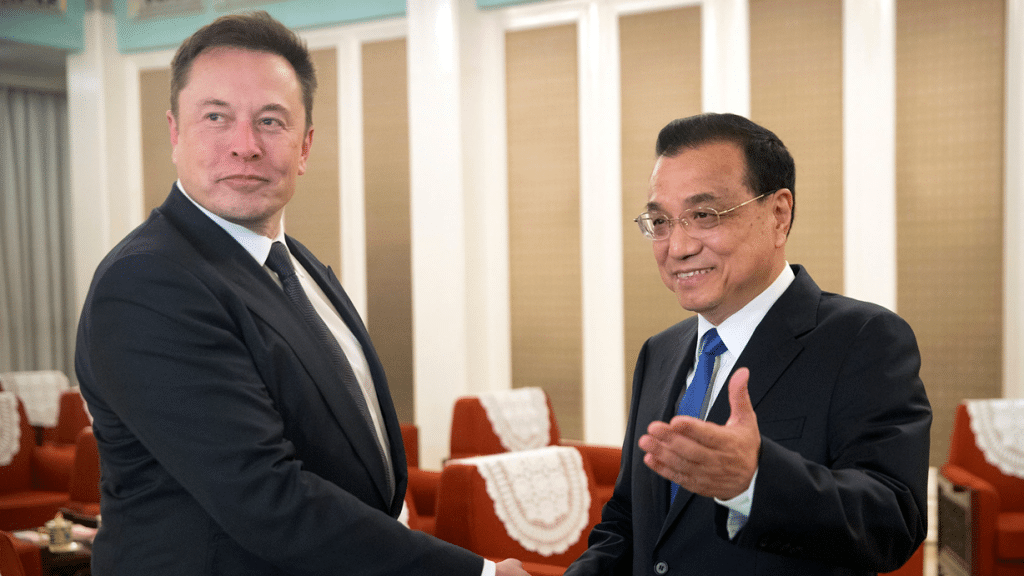
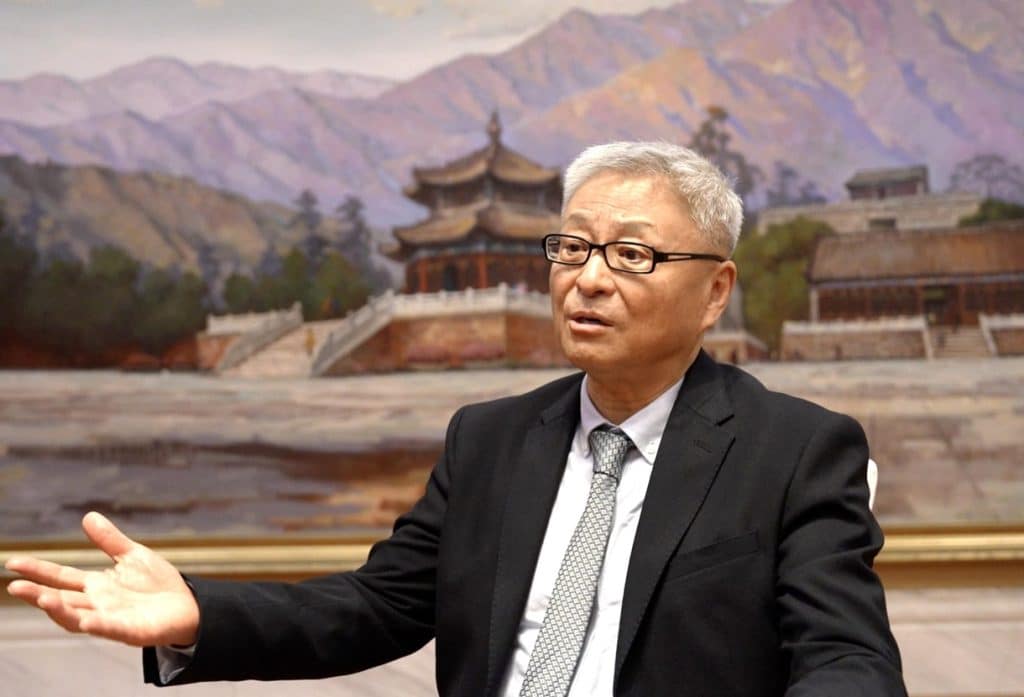

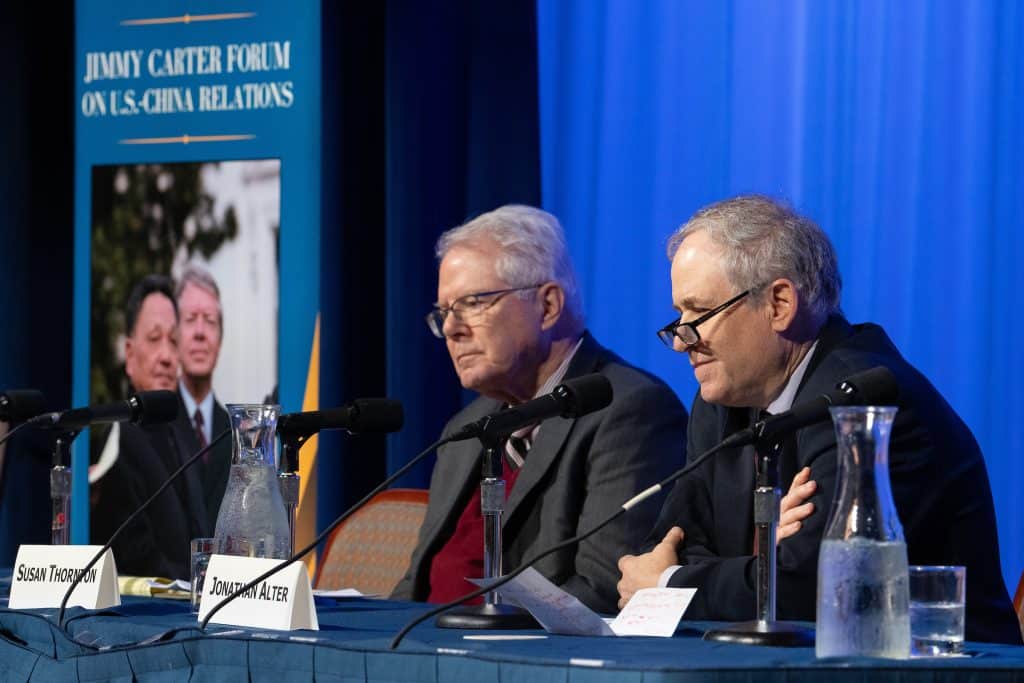


1 Comment
Don’t wig out over headlines. Everyone trains against the threat. And China is a threat. If you don’t think that the PRC hasn’t practiced against US tactics you are not being intellectually honest!